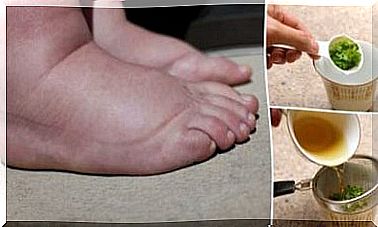What Is Atypical Swallowing?
Atypical swallowing is a condition in which the swallowing process in humans is affected. It has dental, digestive and respiratory consequences. We will explain what it is and how it is diagnosed.

To speak of atypical swallowing, the following condition must appear: the tongue must adopt an inadequate position when swallowing. This means that the tongue positions itself in places that do not favor the ingestion of food.
From a physiological point of view, the tongue has only one function in the swallowing process. When food enters the mouth, it is she who is responsible for directing them to the pharynx so that they go to the digestive system.
If the tongue takes a counterproductive position during swallowing or is used in a way that does not promote this food transit, then we speak of atypical swallowing. It is more of a functional concept than an anatomical one.
Stages of swallowing
In general, swallowing consists of three phases; with atypical swallowing, the first phase is impaired. These phases are: oral, pharyngeal and esophageal.
- Oral: this first phase is the localization of atypical swallowing when it exists. This is when food enters the oral cavity, where saliva is secreted, where it is chewed, and the tongue ends up pushing it towards the pharynx.
- Pharyngeal: it is an involuntary phase where the food bolus passes to reach the esophagus.
- Esophageal: this is the final phase of swallowing, also involuntary, when the bolus passes into the stomach.
Symptoms of atypical swallowing
When a person suffers from atypical swallowing, it becomes evident through a series of signals. These same signs are those used by healthcare professionals to diagnose the disorder. Among the symptoms, we find:
- The tongue, at rest, is not placed against the palate but between the teeth.
- The person breathes mainly through the mouth instead of through the nose. At the time of childhood, it is associated with the typical framework of mouth breathing.
- The upper and lower teeth lose contact and a permanent distance is created between the two dental arches, in part due to the interposition of the tongue and mouth breathing.
- Swallowing is noisy because it requires more effort.
- Food is not processed properly during the first swallowing phase. The tongue does not push the bowl towards the pharynx with the force it should, so in advanced cases the person makes head movements to push the food towards the second phase of swallowing.
- The muscles of the face, closest to the lips, become soft. The term adequate is that of muscular hypotonia.

Causes of atypical swallowing
Atypical swallowing is diagnosed more in children than in adults. Part of the reason is that the causes are related to development and congenital anatomical structure during birth and growth in the first years of life. The most common causes of atypical swallowing are:
- Prolonged use of the pacifier: when the use of the pacifier continues after 1 year and mid-life, it no longer facilitates the formation of the oral cavity but begins to be counterproductive for dental development. Moreover, it does not allow the tongue to adopt the required position.
- Sucking from the bottle or fingers: as with the pacifier, when the bottle is used longer than it should, or when the child sucks one of his fingers, the tongue does not learn its function.
- Enlarged adenoids: The tonsil and adenoids system may be larger in some children. Under these conditions, the air enters with more difficulty and swallowing is also complicated. This is a cause that finds its solution in the treatment of hypertrophy with drugs or an operation.
- Tongue frenulum too short: a child may be born with the tongue frenulum shorter than it should. This will therefore limit the movements of the tongue, resulting in atypical swallowing.
- Ankyloglossia: This is a rare disorder in which the muscles of the tongue are harder.

Possible treatments
There are no medications to specifically treat atypical swallowing. The rigorous treatment consists of re-education of the tongue and a mechanical solution to the cause that may be hidden behind the disorder.
Obviously, if the lingual frenulum is too short or if there is an enlarged adenoids, an operation will be performed. However, even with resolving this problem surgically, rehabilitation will be necessary afterwards.
One of the professionals involved in this rehabilitation is the orthodontist. Its function in this treatment is to correct dental deviations to bring the upper and lower arches back to their normal position.
The other essential professional in this rehabilitation is the speech therapist. Speech therapists re-teach the child and his tongue to position himself in the right place, how to pronounce words or chew, etc.
So, as parents, it is important to pay attention to our children: how they chew, how they breathe, how they speak. If we have any doubts about a possible atypical swallowing, we should consult health professionals.









